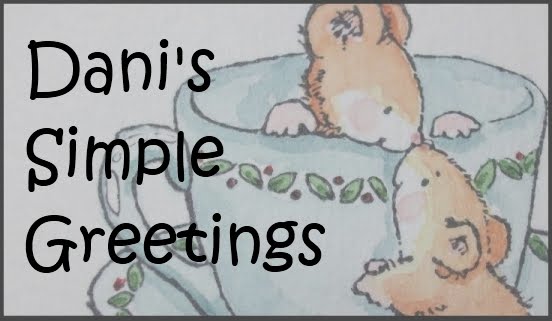HOW TO USE WATER SOLUBLE PENS TO COLOUR A STAMPED IMAGE
I don't consider myself an artist by any means, but I get a tiny thrill whenever I produce a little picture like this that I can share with my loved ones via greeting cards. I especially adore adorning cards with these gorgeous mouse stamps from Penny Black!
Copic markers are all the rage now and they produce beautiful results. But my messy, heavy handed style isn't really suited to them, and I find these water soluble markers much more cost effective because you don't GENERALLY require shades. It's simply a case of adjusting the water to ink ratio when colouring to get the shades you want!
First of all you want to stamp your image onto watercolour card.
You can do this on regular cardstock, but you may get pilling, bleeding, tearing and holes. Watercolour card is made of cotton and allows you the freedom to move ink and water around a lot without damaging the image.
Also very important is the type of ink you use - you want a fast drying solvent ink. I recommend StazOn. You basically want something that dries quickly and won't be smudged by water!
Next select your colours! You need to use water soluble markers such as these ones from Stampin' Up or Tombow markers. They are double-ended markers - one end has a large brush-style nib and the other has a fine pen nib.
The above markers are all the markers I use in the Tea Cup photo - not many!
Rather than scribbling straight onto the page, you want to scribble some ink onto a plastic surface, using the brush end of your marker - I use one of my stamping acrylic blocks (just make sure to put some white paper underneath so you can see the ink well).
Next you need an aqua brush. You can use a standard brush and dip it in water but you get better control using these aqua brushes because they are designed to maintain a good level of moisture on the bristles.
Depending on how much colour you want, use the damp aqua brush to pick up some ink. I recommend starting with just a little bit of ink until you can determine how dark you want the colouring to be.
Your first colouring layer is a gentle wash of colour over the image. Moving in a circular motion can give a nice even application. But it really depends on what kind of look you're going for! The beauty part is that watercolour isn't supposed to look perfect and neat.
This is the image with the wash layer finished. Now you need to use the same colouring technique to add any additional layers of colour.
In this layer you can add lighter and darker shades if you want, but the shadows are "officially" done a little further on when you can take a look at the almost complete image and see where you think shadows should be.
This is the image now that the additional layer of colour has been added! I have added orange to the mice, allowing some of the yellow to show, and coloured their cheeks with the light pink.
Now you use the fine tip of the pen to create accents and definition to the image.
For instance, in this picture I have used the pale pink to colour the tail and noses (as they are quite fine). And I use the orange around places like ears and arms where there would be bold shadows. I also use a red marker to colour the tiny berries on the mug and the green marker to add some definition to the leaves.
And your final step - the shadows! Figure out where you think your light source is and do darker shades accordingly. Don't stress about it being perfect - mine aren't but still look effective!
And there you have it, the completed image! I just love the softness of the colouring and the casual, perhaps old-fashioned, feel it has!
Here are some more of my mice (I am obsessed with them!), of which I actually have a LOT more!
Happy Colouring!
Dani












No comments:
Post a Comment